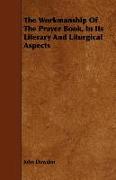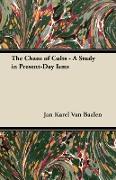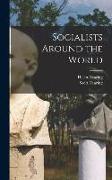- Start
- The Workmanship of the Prayer Book, in Its Literary and Liturgical Aspects
The Workmanship of the Prayer Book, in Its Literary and Liturgical Aspects
Angebote / Angebote:
PREFACE IN the following pages some general knowledge of the history of the Book of Common Prayer is assumed and the writer has occupied himself mainly in considering the materials our Reformers had before them, and the manner in which they dealt with those materials, as viewed from the standpoint of liturgical and literary art. The attempt here made to review the literary character of the work done by the Reformers of the age of Edward VI. and of the changes effected by those responsible for subsequent revisions will, it is believed, enhance the aftitionate appreciation and deepen the gratitude with which the English Churchman regards his Prayer Book. Yet no attempt has been made to represent the Prayer Book as incapable of further improvement. Truly admirable as it is, it is a human work, marked by human imperfections And in several places suggestions are offered which, it is believed, would, on the liturgical and literary side, still further increase the value of the Prayer Book as the manual of the Churchs public worship. The discussion of doctrinal questions has through- out been studiously avoided. Notwithstanding the large measure of attention that has been bestowed in recent years on the sources of the Prayer Rook, and the materials upon which the English Reformers worked, there is still need of further inquiry in the direction pointed to in the following sketch The main outlines of the architectural design are sufficiently obvious, but the treatment of details still leaves much to be desired. What we see is to have the working drawings, so to spear, before us. And though the reconstruction of these working drawings must now necessarily partake of conjecture, still probabilities are, in several instances, so considerable as to leave little doubt as to the actual processes of construction. Examples of such inquiries into details will be found in the discussion of how the epithet holy came to be omitted from the notes of the Church in the English form of the Nicene Creed in the discussion of the formation of the noble anthem of our Burial Service, In the midst of life we are in death and in the treatment of the construction of the English Litany. The simile of working drawings, however, will mislead if it tends to obscure what seems to be certain viz., that in some cases the liturgical forms grew, like a living thing, under the hands of the artist who shaped them. The general plan and outline of any particular service was considered and determined but it seems plain that in working out the details there was considerable freedom within the limits prescribed by liturgical form. There was nearly always room for the exercise of judgment and discrimination, of skill, adroitness, and literary taste while at times we feel that it was nothing short of the creative power of genius that has left its mark not only on the larger designs of structure, but on the minuter workmanship of the constituent parts. Special attention is called to the discussion in Appendix A p. 227. Pursuing a line of study already indicated in Mr.........
Folgt in ca. 15 Arbeitstagen




